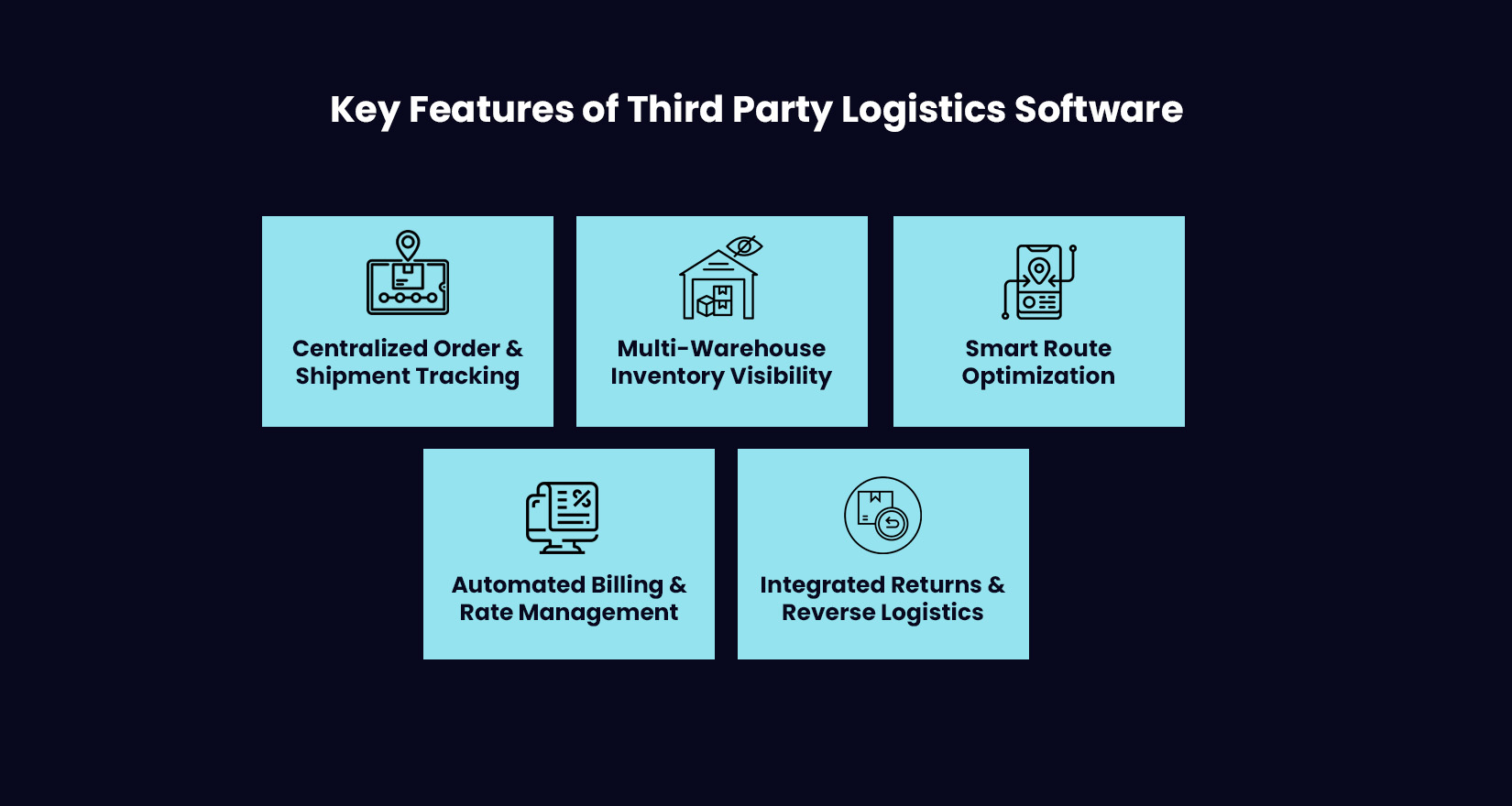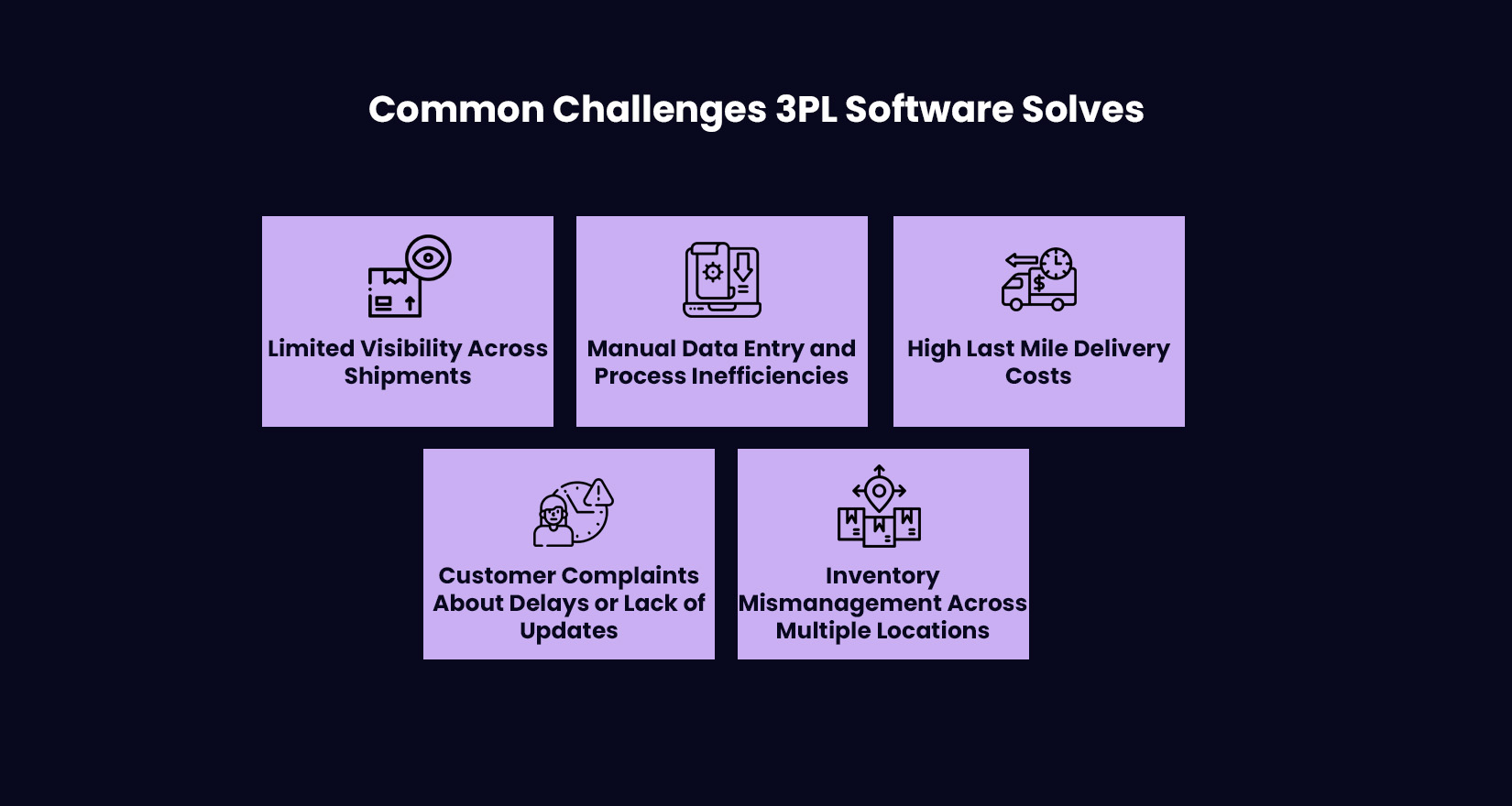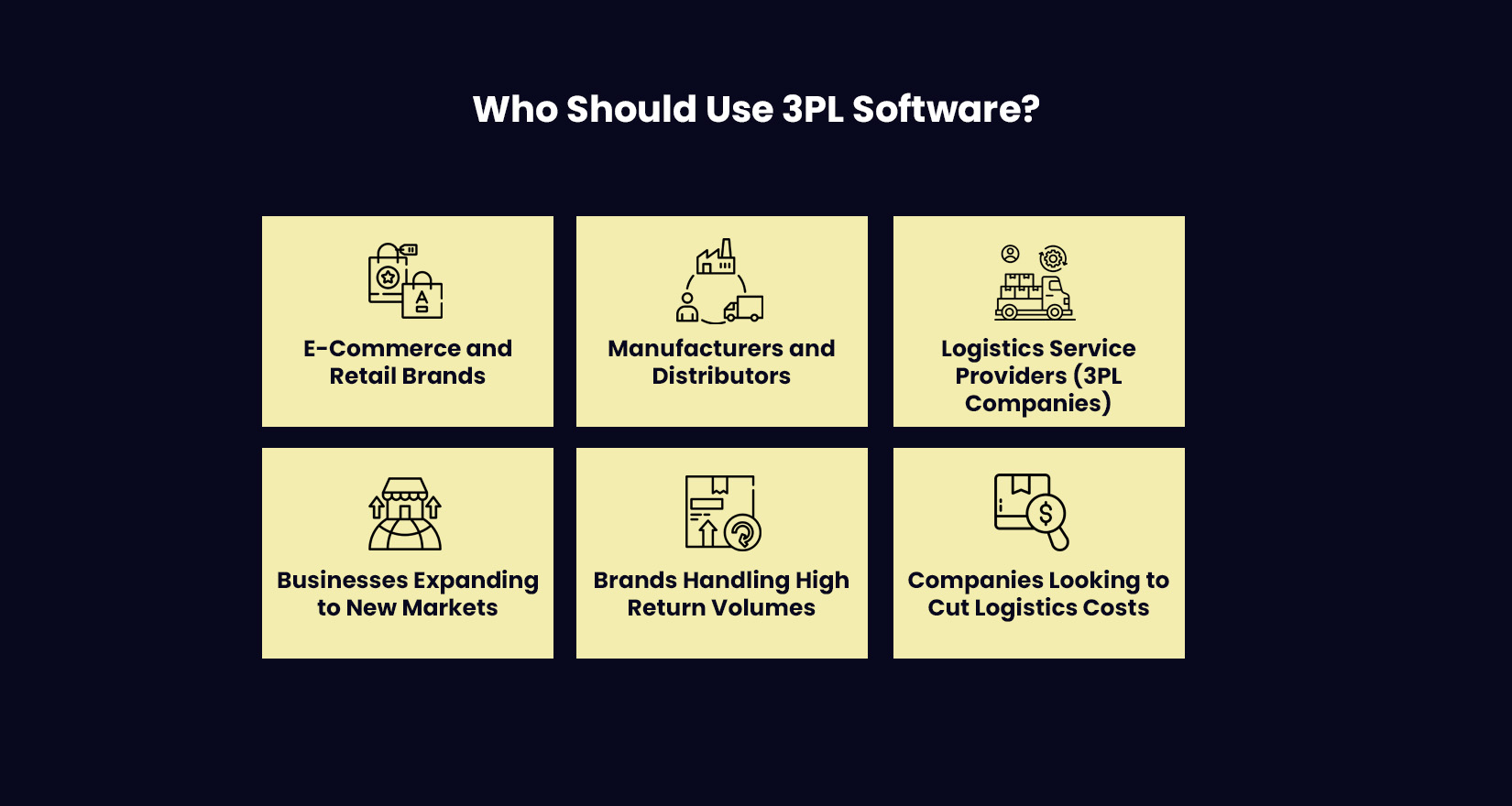
Third Party Logistics Software: The Essential Guide
The logistics world isn’t just getting larger, it’s gaining speed. As supply chains become increasingly complex, and customer expectation shifts from “it will be here in a few days” to “I want it now,” it stands to reason that businesses are turning to smarter systems for the smooth running of everything. That’s what third party logistics software does for you. Think of it as the operational backbone for companies utilizing partners for storage, management, and transportation of goods.
Whether you work with third party logistics (3PL) providers, or want to learn how to scale your logistics operation, our guide lays out everything you need to know. Including what 3PL software does, and how to choose the right one for you.
What Is Third Party Logistics Software?
Third-party logistics software ties together shippers, carriers, warehouses, and end customers into one solution. They provide visibility into order status, inventory positions, vehicle statuses, delivery ETAs, and reverse logistics workflows in real-time.
To put it simply:
– It simplifies communications.
– Automates operational workflows.
– It provides visibility in every aspect of the supply chain.
And it saves money—when executed properly.
Why Are Businesses Adopting 3PL?
Demand is changing. Quickly.
– The global Third Party Logistics (3PL) market is anticipated to grow to $1.75 trillion by 2027. Owing to e-commerce growth and increased delivery demands.
– 90% of Fortune 500 companies use third party logistics to reduce expenses and improve operational efficiencies.
Companies no longer think of logistics as “just delivery”. Logistics can be a true customer experience differentiator. If your delivery is late or damaged, it’s your fault, not your logistics partner’s. That’s why visibility, control, and accurate data are essential.
Key Features of Third Party Logistics Software

1. Centralized Order & Shipment Tracking:
The software allows access to any and all orders and shipments in one location with current status information. This eliminates chase down tasks and allows customer communication to be succinct and timely, resulting in less delays and increased transparency.
2. Multi-Warehouse Inventory Visibility:
It features a single view of inventory across multiple warehouses or fulfillment locations to eliminate stock outs and over purchasing. Doing this while supporting allocation by location and demand.
3. Smart Route Optimization:
Route scheduling is automated and takes demand data, window of delivery, and traffic conditions into consideration. This helps to reduce fuel costs, increased delivery times, and fleet utilization, thus saving time and costs.
4. Automated Billing & Rate Management:
The platform automatically calculates rates based on carriers’ contracts and details of shipment to develop invoices. Run incurred costs with less inaccuracies than manual invoicing, speed up payments and eliminate manual variance reconciliation from contracts to shipment.
5. Integrated Returns & Reverse Logistics:
This software will help facilitate a more streamlined returns process from pickup through inspection and restocking. This enables a quick turn around and assists in reducing the cost of processing returned inventory.
Common Challenges 3PL Software Solves

1. Limited Visibility Across Shipments:
Without unified tracking, it’s hard to know where your shipments are at any given time. Third party logistics software acquires real-time visibility into carriers, warehouses, and delivery partners reducing the guesswork. Thereby, helping teams with the ability to respond to delays before they reach customers.
2. Manual Data Entry and Process Inefficiencies:
Numerous logistics workflows still rely on spreadsheets, email, and phone calls – leading to errors, duplication of business functions, and slow turnaround times. Vanguard and 3PL software automates repetitive functions, standardizes workflows, and verifies the accuracy of data throughout the supply chain.
3. High Last Mile Delivery Costs:
The last mile is often thought of as the most expensive part of the delivery. Factors contributing to last mile costs include traffic, fuel prices, and routing inefficiencies. Software employing routing optimization and fleet planning functionalities help businesses. It helps by reducing the number of miles driven, maximized capacity in a delivery truck or vehicle and decrease the actual delivery times to a customer.
4. Customer Complaints About Delays or Lack of Updates:
Customers expect timely updates and accurate ETAs. When they don’t receive those updates, they’ll complain or, worse, take their business elsewhere. Third-party logistics software provides live shipment notifications and shipment tracking. It also provides automated alerts to help improve communication and confidence for customers.
5. Inventory Mismanagement Across Multiple Locations:
Stock management is hard when all your data is not centralized, especially across varying warehouses. The software provides one singular view of inventory levels, movements, and reorder needs so teams can avoid stockouts and reduce holding costs instantly.
Who Should Use 3PL Software?

1. E-Commerce and Retail Brands:
Online sales have increased, and they come with mounting expectations of delivery. Nearly 73% of consumers want fast, trackable delivery. A third-party logistics, or 3PL, software can help a growing brand handle vendor spikes, provide a streamlined fulfillment process, and deliver accurate shipment updates, all without widening the internal logistics team.
2. Manufacturers and Distributors:
Companies that make or move goods across regions need to have tight control of stock levels and distribution timing. Costs to carry inventory usually range from 20-30% of the total value of inventory, so the ability to have better visibility and automate stock allocation becomes critical. 3PL software keeps supply moving while significantly reducing waste.
3. Logistics Service Providers (3PL Companies):
For the 3PL provider, the software is the operational backbone, managing clients, warehouses, fleets, billing, and performance. All functionalities should allow scaling to the business without adding headcount. As the 3PL outsourcing market is expected to reach $1.75 trillion by 2027, growing demand for more opportunities will influence this matter.
4. Businesses Expanding to New Markets:
A company expanding across states or countries will increase coordination complexity. 3PL software can support multi-site, multi-carrier, and regional routing operations, thus reducing time wasted on manual planning and expensive delivery errors.
5. Brands Handling High Return Volumes:
Returns may erode margins—especially since return rates in e-commerce range from 20–30%. The software automates reverse logistics tasks, including pickup, inspection, and restocking, allowing for swifter turnaround and value recovery from returns.
6. Companies Looking to Cut Logistics Costs:
Fuel, labor, and carrier rates are on the rise. As transportation is often 45–70% of the total cost of logistics, logistics can only improve with constant improvement in small efficiencies. 3PL software will measure routes, loads, and rates, significantly lowering operational costs without sacrificing service profitability.
The Future of 3rd Party Logistics: What’s Next?
The future of third-party logistics will no longer be about moving goods more quickly. It will be about moving them more intelligently. Predictive analytics will help companies forecast demand before a purchase is made, rather than after, reducing out-of-stocks and overstocks, freeing up working capital. Artificial Intelligence will automate dispatching, load balancing, and capacity planning to reduce human guesswork. Meanwhile, robotics and autonomous materials handling systems will help accelerate warehouse operations while reducing injuries.
Sustainability will take center stage. You can expect to see greener fleets, electric delivery trucks, energy-efficient warehouses, and carbon-optimized routing to create efficiencies. The 3PL providers that meet the future head-on will do so by combining automation, visibility, and customer-focused delivery experiences.
Conclusion
Efficient logistics has progressed from being simply a backend function to a competitive advantage. Today’s customers expect speed, accuracy, and transparency on every order; therefore, businesses require the systems to provide this consistently. Software for Third-Party Logistics provides organizations with the visibility, automation, and control it has lacked. Logistics goes from being a cost center to a performance engine.
If your operations are scaling (or you want them to), now is the time to upgrade your logistics technology stack. Schedule a demo with LogiNext and see how leading global brands simplify fulfillment, minimize delivery costs, and create better experiences for customers. And do it all without adding chaos to your teams!
28







@LogiNext